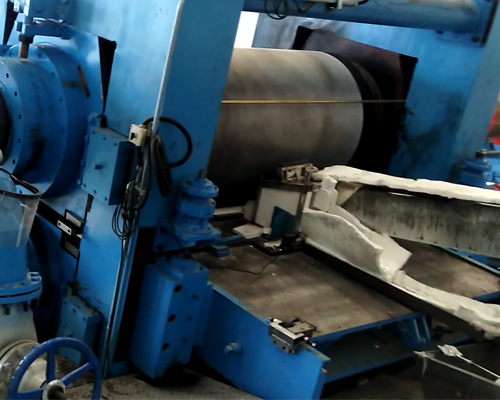The double-roll continuous casting-rolling method to produce cast-rolled strip blanks refers to a production method in which liquid metal is directly crystallized between two rotating rolls and processed into a strip blank at the same time. Because of its simple production process, short construction period, low production cost, low investment and small footprint, this technology has been widely developed.
The continuous casting-rolling process is to continuously input liquid metal between the two relatively rotating inner water-cooled casting rolls. Through cooling and casting, the cast-rolled aluminum strip is directly and continuously rolled.
The salient feature of this process is that two rotating casting rolls cooled by water are used as crystallizers, and the aluminum melt completes the two processes of solidification and hot rolling deformation in a short time between the roll gaps of the casting rolls. The aluminum strip blank produced by this process has less waste loss, high yield, few production procedures, short cycle and high production efficiency.
The function of the casting feed nozzle is to send the aluminum melt into the gap between the casting rolls. Therefore, the feed nozzle is a key component that directly distributes and transports the aluminum melt to the roll gap in the continuous casting and rolling process, and it is also the throat of the casting system. Its reasonable structure directly affects the product quality and output.

The feed nozzle is composed of a mouth fan, a gasket, and edge ears. The lip of feed nozzle should not be too thick, too thick will easily rub the roller surface and scratch the roller surface and the board surface. The lips of the feed nozzle should not be too thin, too thin and easily damaged. It is necessary to consider its relationship with the flow channel to ensure that the metal flow channel is wide enough to ensure the unobstructed flow of the liquid. To determine the size of the lip of the feed nozzle should be organically combined with the casting area, alloy, plate thickness, and runner size.
The requirements for the feed nozzle device are:
(1) The structure should be firm and reliable to ensure continuous production.
(2) The structure should be simple, easy to operate and replace.
(3) The feed nozzle has better heat resistance and good heat preservation.

